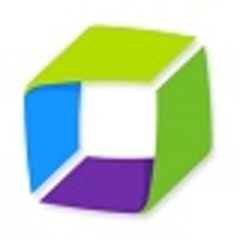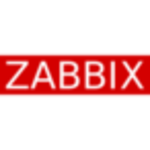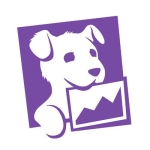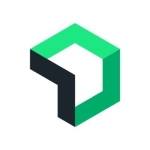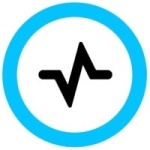What is our primary use case?
We have AppMon, and our primary use cases are to
- gain greater visibility into our applications and our full stack of technology
- be able to provide our developers with insight into their applications
- be able to see our systems, monitor them for availability
- really reduce our mean time to resolution, if and when we have problems.
It does really well, it really gives us that insight that we need. We have a large instillation and it does a decent job of handling that. I do foresee us looking at the Dynatrace product long term, to help address a couple of the things that we have some issues with time to time, but overall I would say it's really good.
How has it helped my organization?
I think it has improved the way our company has functions because of the insight that we have now into our applications. On top of bringing in the AppMon product to our organization, we've also really been trying to push APM as a culture, trying to get everybody in our organization, developers, to start think about APM ongoing and in the earlier environment, like our system integration environment, our user acceptance testing environment, and our production environment. Having AppMon has provided the visibility and capabilities that we needed in order to be able to drive that culture.
What is most valuable?
For me, the most valuable feature of this solution is that deep dive that we get out of the AppMon product with the PurePath technology, and the way that the PurePath stack works. It's visibility that we didn't have into our applications before, and it really filled a void that we had within our organization of being able to understand what's going on at that layer.
What needs improvement?
I've learned a lot during this Perform 2018 conference about the direction and the roadmap that Dynatrace is going with the actual Dynatrace product. One thing that I would like to see is for companies like us - large AppMon customers that have a lot of presence in AppMon, a lot of manually configured things and customizations - would be something that would help us be able to make that journey more easily, the transition from to AppMon to Dynatrace. That would be something that would be really helpful for us, because we do see a lot of benefit, and a lot of new features and things that are really positive in that Dynatrace environment. Now it's a matter of figuring out how we get there.
Buyer's Guide
Dynatrace
January 2026
Learn what your peers think about Dynatrace. Get advice and tips from experienced pros sharing their opinions. Updated: January 2026.
879,768 professionals have used our research since 2012.
What do I think about the stability of the solution?
Overall, stability is good.
What do I think about the scalability of the solution?
We've had some scalability issues with the AppMon product. We're rather large, we have a lot of shared infrastructure, and a lot of shared code. We have one single profile, and we throw a lot of data at it, a lot of applications, we have a lot of agents, so we have had some hiccups in the past with that environment not being able to handle that. But we've worked closely with our contacts at Dynatrace who have been helping us through those situations and trying to improve that going forward.
How are customer service and support?
Tech support is good. They are really responsive to our support tickets. We work really closely. Not only do we have our sales contacts and a sales engineer contact, we have a product success manager as well. We talk to them twice a month, we do calls. We always talk through those open issues, and they're really supportive if there are things that we need to have pushed and escalated, to help us do that.
I've never called, I've opened tickets through the Support Portal, that's the way I've engaged with our support. I'm more on our application business unit side of the house, so not directly involved with the configuration management of the Dynatrace server and environment. I'm more from a usage standpoint, and the configuration of our applications, how we have those set up in the AppMon environment.
Which solution did I use previously and why did I switch?
We really didn't have a rich monitoring presence in the past, from the distributed environment. We also have IBM z/OS, and we have some tooling there that is meeting our needs. We did have a product before, it wasn't very well adopted in our organization, and that was one of the goals of bringing in AppMon, that it was more usable, more user friendly, have more capabilities, and that we could really push adoption across our organization. I would say that it's helped us to be able to do that.
There was a gap that we had, and one of our big initiatives was availability of our applications, being able to make sure that our applications are available and stable; and being able to have that insight to know when they are and aren't. On top of that, was our customer-first efforts, and really trying to ensure that the products that we are putting out there, whether they're for internal or external customers to use, are really meeting their needs and performance needs.
How was the initial setup?
I was involved when we initially went through the PoC, worked with our sales engineer, and brought the product in. I'm on the business side of things, so not necessarily the configuration of the server, the deployment of the agents, but really the configuration aspect that we need to gain the visibility into our applications.
I don't have any complaints about the installation process. We were able to get it ramped up really quickly. From where we started, the scale that we went to in just a couple, three months, was really impressive to me.
Which other solutions did I evaluate?
We had some other vendors on our shortlist. Dynatrace was able to demonstrate the full capabilities and functionality, working in our environment. The other aspect was its capturing of all PurePaths, that was really appealing to us as we want to make sure that we get that data so that we have it and we can use it if we need it.
What other advice do I have?
Regarding the role of AI when it comes to IT's ability to scale in the cloud to monitor performance problems, we don't have a product that has AI right now, but that's something that we're really looking at right now. We're in the middle of PoC on the AI, and capabilities that are built within the Dynatrace product are really appealing to us. We're a large company, and we have a lot of applications, a lot of processes, a lot of hosts, and having something that will automatically detect anomalies and tell us when there are problems, without us having to tell the product when to tell us that there are problems, is something that's really appealing. That is certainly one of the features that we like within the Dynatrace product.
If we had one solution that didn't just give us data, but also real answers, the immediate benefit would be not needing either to have to sit there and watch a dashboard, or to go through the efforts of identifying and programming - within the tool - what is considered bad performance. Something that would detect anomalies, deviations, would certainly free up our time, because we would only have to engage when those things occur.
I think the most important criterion when working with a vendor is having people that obviously believe in the product and know the product very well. We've been very fortunate with the contacts that we've worked with. We have a really experienced sales engineer, and really good sales consultants. We look for ongoing engagement with them, and having them want to ensure that we have a success and ongoing success with the product. We want somebody who is really engaged and feels passionate about helping us get to where we want to get to with a solution.
I give AppMon an eight out of 10. With some of the new things that are coming with the Dynatrace product over the AppMon product, there are a lot of things there. With the couple of the stability issues that we've had throughout our tiers of experience, obviously shoring those things up would help make AppMon a 10. I understand they have a new platform and where they're going with that. I also think the new platform also has solved some of the complexity around it. For AppMon, in order to use the rich client especially, I think you have to be somebody who is in there more often than not. It's not necessarily as intuitive as it could be. The web client has certainly helped with that.
Obviously, find a great partner, find a great associate within the company from which you're looking to implement a solution. But then I would say internally, one of the biggest things that has helped us be successful is, we have a cross-business unit, a group of power users - we call it our APM COE group - that really have a vested interest and a passion around driving APM as a culture in our organization. On top of that, they are working very closely together to continue to innovate and support the Dynatrace AppMon environment that we currently have. That same group is working closely together to look at where we see us needing to go in the future. Where is technology driving us? We've got a really good overall pulse on what's going on within our organization, and how to pick the right solution for the right things.
Disclosure: My company does not have a business relationship with this vendor other than being a customer.

